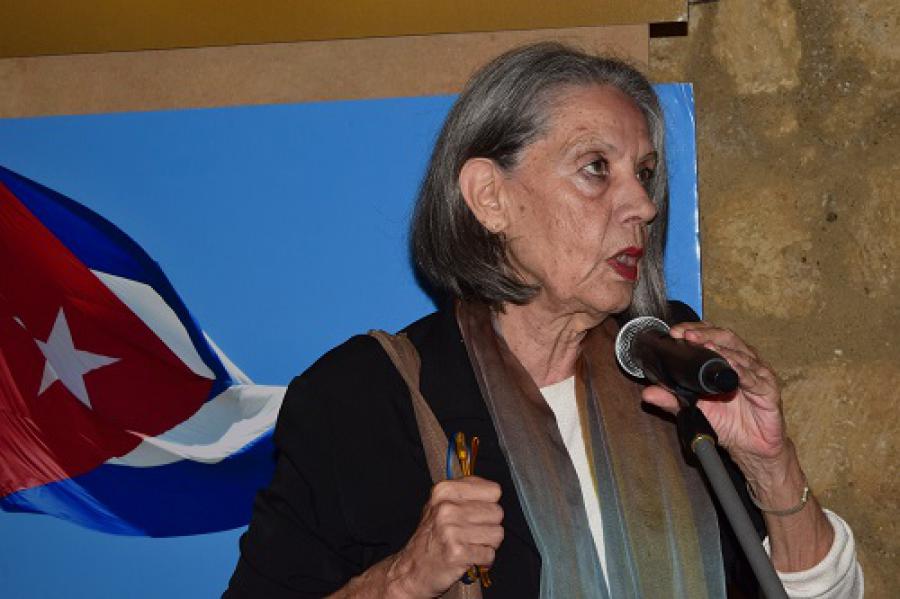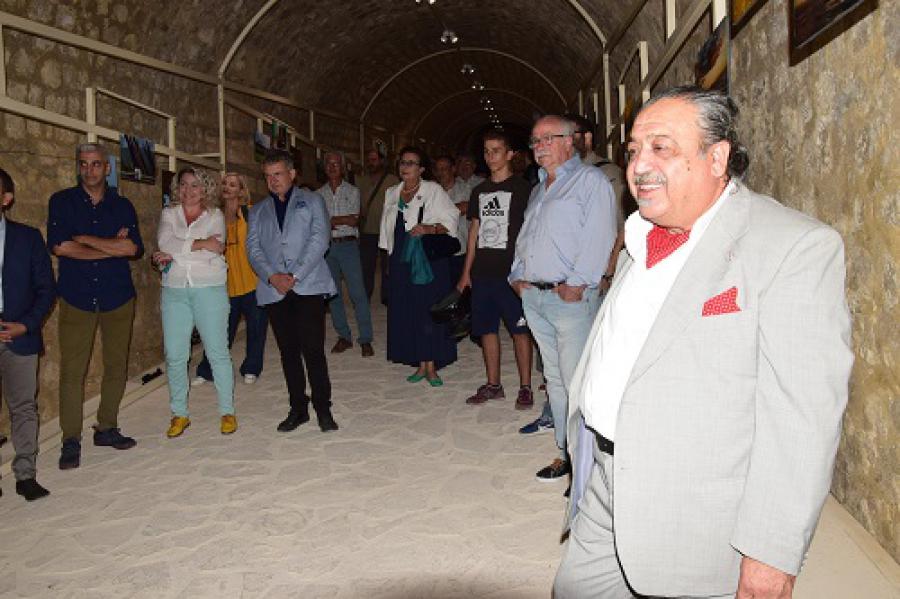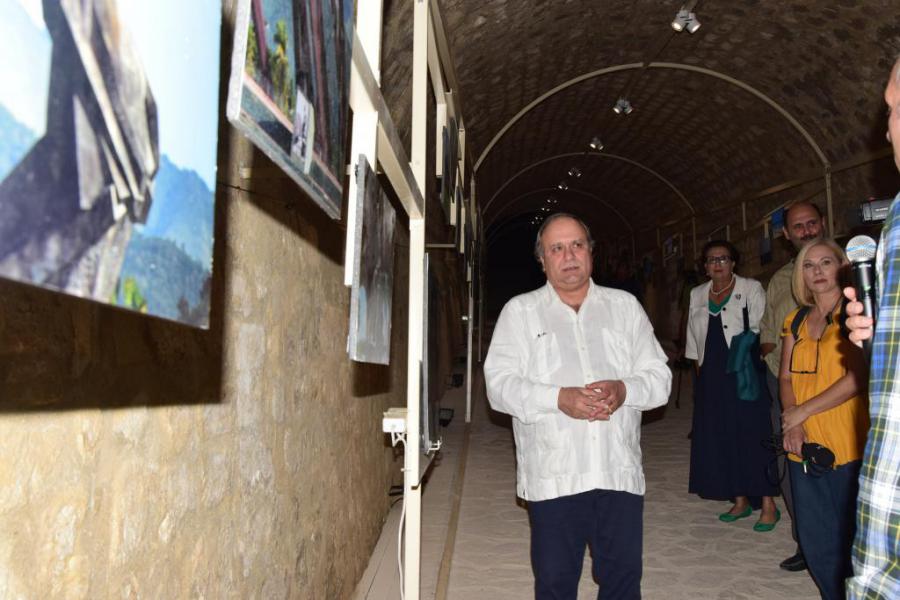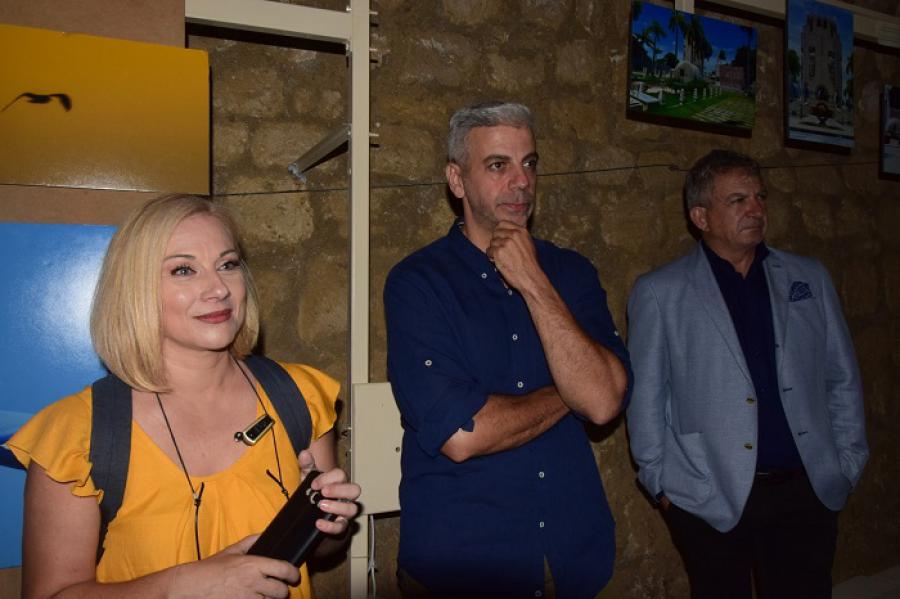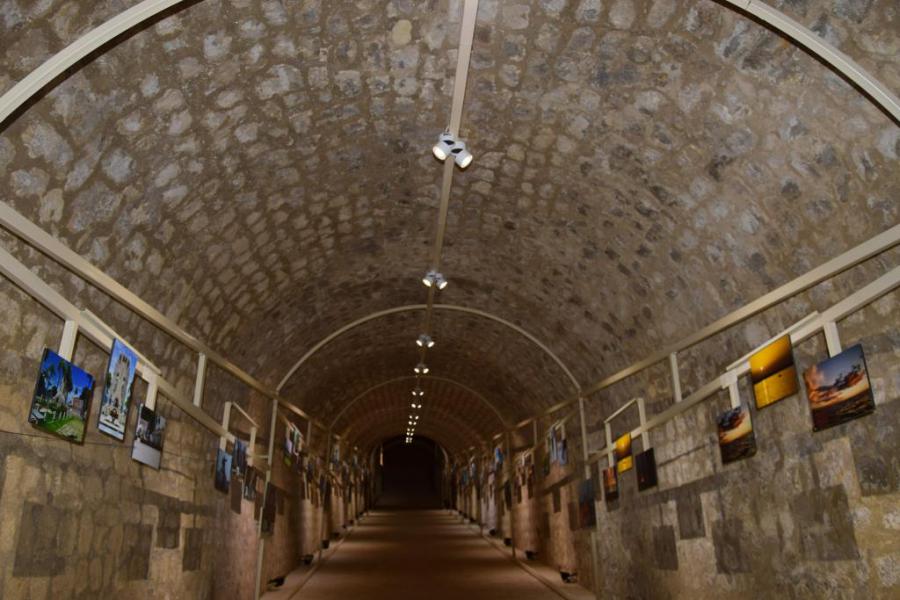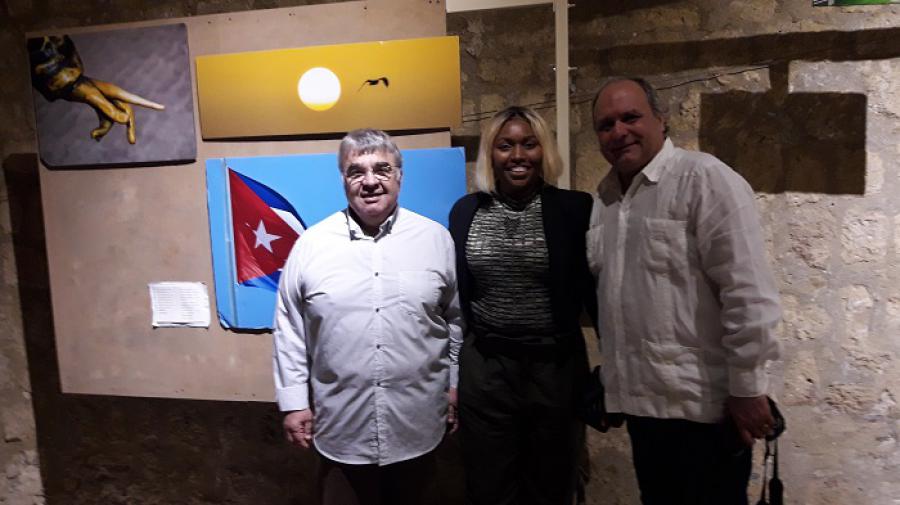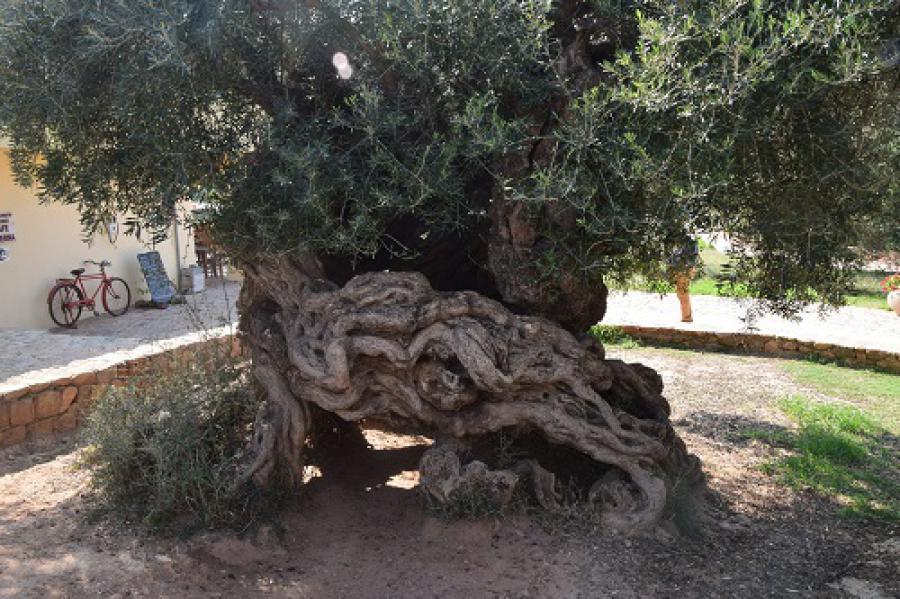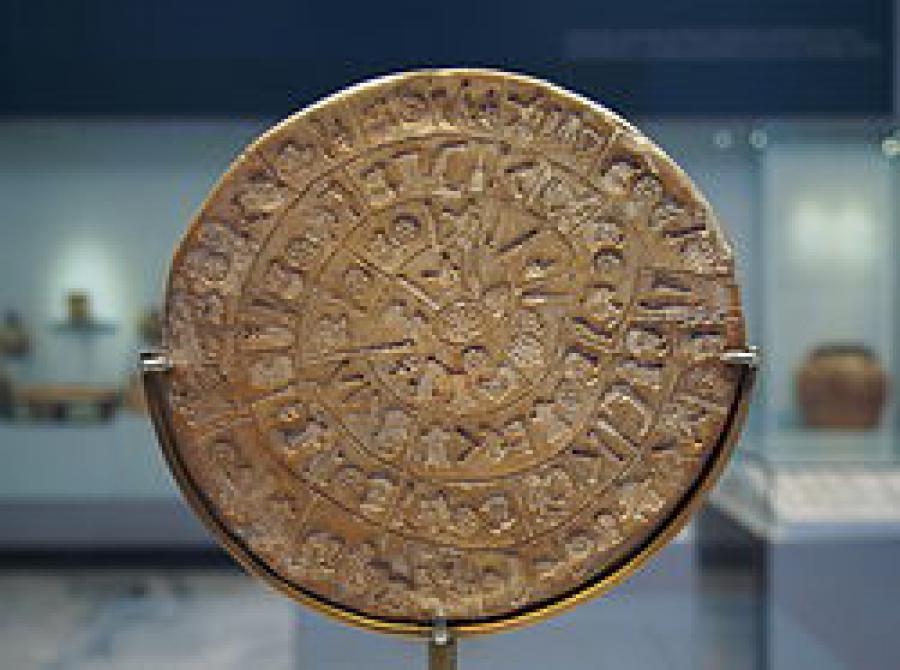(Taken from Facebook Oriol Marrero, counselor of the Embassy of Cuba in Greece)
XII part. Iraklio (Hercules), capital of Crete: photographic exhibition “With Cuba in the heart”. October 17, 2019.
Crete: largest island in Greece. It is located in its extreme south. Fifth in size of the Mediterranean Sea. It is considered the bridge between Africa and Europe, with a strategic geographical location in the Aegean-Mediterranean. In a way, this region forms a “common terrace” of the Euro-Asian, Hellenic, African and Arab geo-historical space. Its historical, cultural and civilizing significance – and not only – is difficult to understand without a deep reading of its past and present. Crete is Crete, and it is only possible here to go by pointing out what concerns the subject in question.
For some researchers in the vicinity of Crete the lost and never found Atlantis of which Plato spoke was located, who quoted by Olegario de Andrade would be paraphrased by José Martí, when representing a Plato “sitting on the rocks of Aegina”, who “ see the seas boil and see the shadows fall that descend to settle on the heights of Hymetus ”.
Crete is the cradle and foundational and primal geographical space of the Minoan civilization, which later, together with the Mycenaean civilization, would engender the Greek civilization, as a common trunk of “the Greek”, as Martí pointed out. The Minoan civilization is recognized and accepted as the oldest civilization in Europe, the first European civilization.
Europe was, according to the myth-story, a Phoenician princess of Argive origin –that is, from Argos, in the Peloponnese–, who would be kidnapped by Zeus, who turned into a white bull carried her on his back to the island from Crete. And he did not carry her because she was tired, he carried her “in Zeus way”. So it’s no wonder Zeus and Europa spawned Minos, the mythical king of Crete. Thus, the continent of Europe takes its name from this myth. And that myth took place, in Crete. In the same way that, always according to mythology, the god of Greek gods, Zeus, the main tenant of Olympus, was born precisely in a cave in Crete. If so, in addition to “Olympian”, Zeus is in a way, “Cretan.”
The well-known legend of the Minotaur – of Minos, by the name of the king, and of Taurus, bull -, according to which the Minotaur was a monster with the body of a man and the head of a bull that lived in the renowned Labyrinth built by the architect Daedalus in a palace, it would happen precisely in the famous palace of King Minos, the palace of Knossos, in Crete. With the essential help of Ariadne, daughter of King Minos, Theseus, son of Aegean, King of Athens, voluntarily leaves for Crete in order to kill the Minotaur in the labyrinths of the palace of Knossos and thus free the Athenians from the tribute of blood, they were required to pay King Minos each year as food for the Minotaur, consisting of seven young men and seven virgins. Theseus had proposed himself to be sent as a tribute, but when he was not granted he proposed to go voluntarily, and try to fulfill the difficult goal of killing the monster of the Labyrinth, the Minotaur, to end the blood tributes.
The mutual love that arises between the newcomer Theseus and Ariadne makes the daughter of King Minos decide to help him, because she thought that even if he managed to kill the Minotaur, he would be unable to get out of the labyrinth. Ariadna gives Theseus a ball of gold thread, which he would unwind as he entered the labyrinth, so that later when he returned, he would find the way out. Theseus first manages to exhaust and then redeem the monster, and following the thread – which clearly did not break – he manages to get out of the complicated labyrinth alive. He returns to Athens, not without taking Ariadne with him.
Before leaving for Crete to try to kill the monster, Theseus had agreed with his father Aegean that, as a message towards the coast, on his return he would hoist white sails on his ship if he had achieved the purpose. And if he didn’t make it, he would hoist black sails.
But on the way back the sailors had to face a great storm and were forced to stop on the island of Naxos. For some reason Ariadna got off the boat, and she was either because she was indisposed; because Theseus abandoned her; because they forgot that she had gotten off; or because given the storm the ship moved away, according to each version of this legend, Theseus’ ship moves away from the shore and leaves Ariadne on land, separating her from Theseus forever. The god Dionysus finds Ariadne, and makes her his wife.
Theseus sails triumphantly to Cape Sunius, in Attica, but amid the joy over his victory over the Minotaur he forgets to change the black sails for the white sails, and continues sailing with the black sails. His father Aegeus, who was waiting for him, seeing the black sails hoisted instead of the white ones that communicated the victory, suffered bitterly for the supposed death of his son Theseus, and not being able to bear so much pain, he threw himself into the sea, from the abrupt, heartbreaking and high cliff. It is when according to legend, upon accessing the throne, Theseus named this sea after his dead father: Aegean Sea. This is not just mythomania. Millennia later, as recently published, there are proposals to rename the Aegean Sea, put in by Theseus after killing the Minotaur and forgetting to lower the black sails.
The Minoan (Cretan) civilization is considered a grandiose, foundational civilization. It had hieroglyphic writing at one stage of its development. They founded important palaces, such as the aforementioned one at Knossos or Phaestos, among others. Crete would come to dominate the entire Aegean. It was a great maritime and cultural power. High exponents of Minoan art are displayed in the important Iraklio Museum, which is one of the most important in all of Greece, as well as in other museums on the island. During a stage of their development – the so-called neo-palatial period – the Minoans used the linear writing A, which has not yet been deciphered, as reflected in the relevant Disc of Ephesus, found in the palace of Phaestos, and whose original is exhibited in the Museum of Iraklio.
Around 1400-1100 BC the Mycenaeans of mainland Greece dominate Crete, largely assimilating their civilization. The Mycenaean civilization does not decipher this Minoan writing, and assumes the linear B. Then the Doric city-states of Crete would emerge, following the patterns or rules of the Spartan regime. In 69 BC Crete is occupied by the Romans. Then it would be conquered by the Saracens and liberated in 961 after Christ; in 1204 it was sold to the Venetians and in 1669 it was occupied by the Turks. In 1898 its independence was proclaimed and in 1913 it joined Greece. During the Second World War there was a strong anti-fascist resistance, and the well-known Battle of Crete took place there.
The Cuban National Hero José Marti mentioned the island of Crete on at least three occasions. One of them in his Works, and twice in his translations. It is striking that Martí translated various poems by the Greek poet Anacreonte (570-485 BC) from the Greek language, one of which contains a reference to Crete, the one called “To the loves of himself”, which expresses, according to the Marti´s translation:
“If you know how to count the leaves of all the trees, and find the waves of the sea all, I will make you the only narrator of my loves: firstly, put 20 loves from Athens and another 15.
After Corinth put series of loves, because it is in Achaia where women are beautiful.
Give me also the Lesbios, and even the Ionians, and Caria, and Rhodes: 2,000 loves.
What do you say? He always points at the tablet. I have not yet said the Syrians, nor the wishes of Canobo, nor those of Crete that gathers them all, where love celebrates banquets in the cities.
That? Do you want me to still tell you about the loves of my soul, those from beyond Cádiz, those of the Bactrians and the Indians? “
On the island of Crete, love is alive for Cuba and her people, her history and her struggles. There are many friends from Cuba in Crete.
Several Cuban citizens reside there, some of whom have founded Cuban-Greek families with descendants. Several of his Cuban-Greek children have participated with their drawings in the children’s and youth contest “With Cuba in the heart”, which has been organized in Greece for three years in a row, and in whose last edition children and adolescents from six countries participated. with more than 50 jobs.
Precisely the fruit of this love for Cuba, on October 17, 2019, the photographic exhibition “With Cuba in the heart” was inaugurated in the capital of the island of Crete, organized, among other actors, by the Municipality of Heraclio, the Museum of Natural History and the Makasi gallery, located in the old Venetian wall of the city, as you can see in the images. The sample was exhibited between October 17 and 31, and was visited by the interested public.
This edition was dedicated to greet, from Crete, cradle of Minoan culture, the day of Cuban culture. In the familiar and heartfelt opening ceremony, Manolis Vrithias, friend and brother of Cuba, participated, who coordinated and promoted the possibility of presenting the expo in Crete; the vice mayor of Iraklio in charge of culture Mrs. Aristea Plevri; the director of the Museum of Natural History of Iraklio, Mr. Nikos Poulakakis; the ambassador of Cuba, Zelmys María Domínguez Cortina, and the author of the exhibition.
The opening was also attended by representatives of the mayor of Heraclio, the mayor of Festos, representatives of the press, organizing institutions, various political forces, friends of Cuba, businessmen, Cubans residing in Iraklio, and the general public. Cretan television and radio stations covered this Cuban and Greek event, which further united both peoples.
In these hours, there were also exchanges with university institutions, with scientific centers, businessmen, meetings and exchanges with Cubans residing in the city of Iraklio and in the second city of the island, Canea, where an interview was also held with the mayor of the city, which requested and invited to also show the Cuban photographic exhibition in Canea, evaluating the possibility of alternatively mounting, “With Cuba in the heart” and, “José Martí: with Greece in the heart”.
If the known circumstances allow it, complying with the invitation of its mayor’s office, it will also be shown in the city of Canea, in Suda Bay, Crete, this modest but heartfelt exhibition that contains a message of friendship, peace, love, and cultural exchange. between the peoples, of solidarity, in that “common terrace” of the Euro-Asian, Hellenic, African and Arab geo-historical space, bathed by the “turbulent Mediterranean” (1881), by the “wrathful waters of the Mediterranean” (1882) , for “the sea of tremendous anger and historical battles” (1882), according to Martí.
In pictures: opening of the expo “With Cuba in the heart” in Crete. Makasi Gallery, Iraklio Venetian Wall; some Cuban symbols that are venerated in Iraklio and found in the city; Oldest olive plant in the country – it is said – with more than 3,000 years of life, and produces; Disc of Ephesus, Museum of Iraklio; palace of King Minos in Knossos, where the Labyrinth and the Minotaur would be; cave where Zeus would have been born, according to mythology; the flag of Greece and Cuba raised together at an important scientific center in Crete; the sun and the seagull, common references in Crete and Cuba, brother peoples of the sea.
Stay Connected
Must Read
Related News
